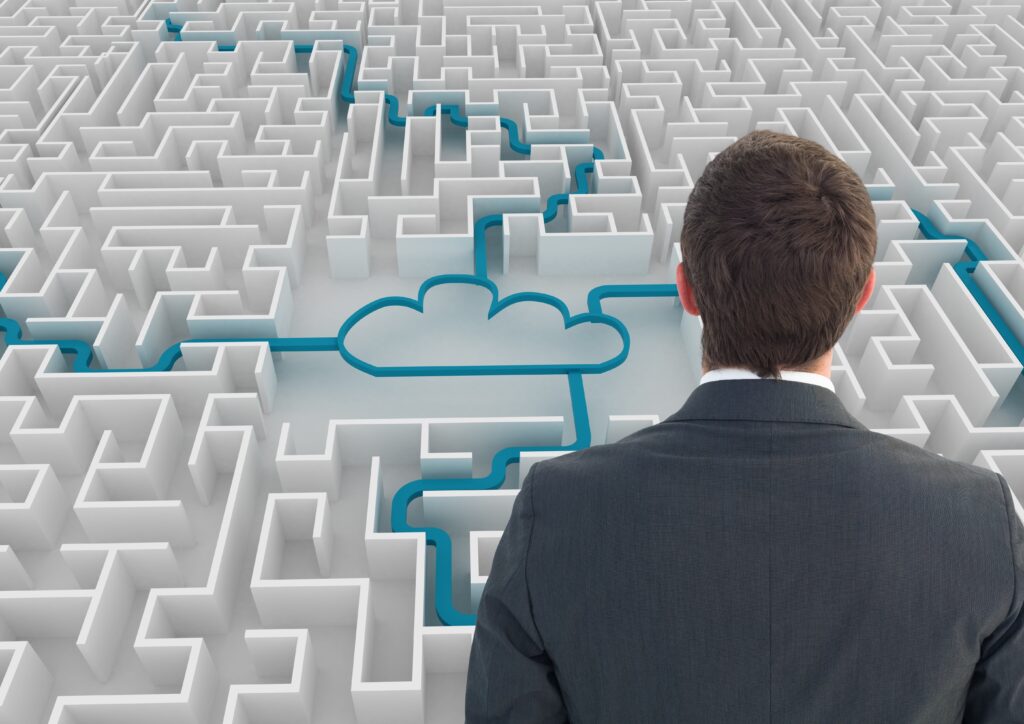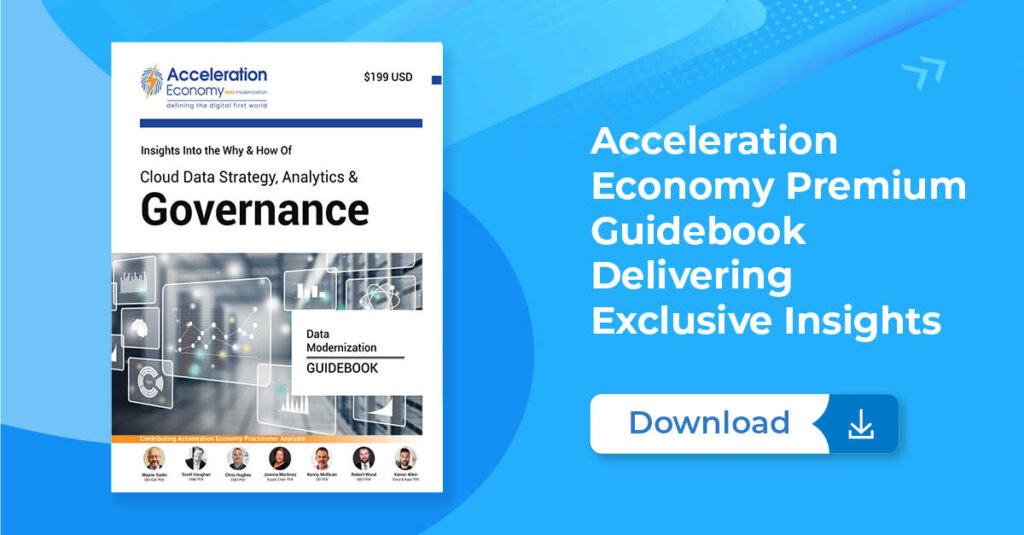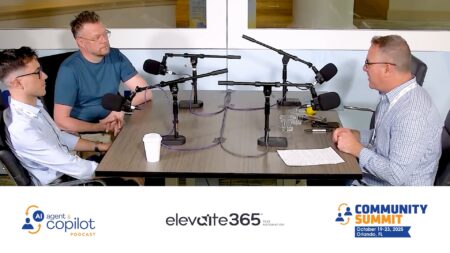Broad understanding of the benefits (avoiding vendor lock-in, no single point of failure, tailoring workloads to the optimal service provider) of multi-cloud is driving up usage, with 60% of cloud users employing multiple clouds, and another 21% planning to use multi-cloud within a year, bringing total multi-cloud usage to 81% of those using the cloud.
At the same time, there’s a growing understanding that using multiple providers can also introduce layers of complexity requiring management of their own.
Research published today by NetApp, a provider of multi-cloud, hybrid cloud, and data management technology, details the level of complexity and its impact in areas including cybersecurity, manageability, and visibility into data living in dispersed — and disparate — clouds. The report addresses budget, ROI, and other cost factors that remain sticking points despite the accepted wisdom that cloud usage equates to cost savings.
If not managed proactively, any or all of these factors can work against IT efficiency as well as more strategic considerations including the ability to innovate and grow the business.
Visibility and Cybersecurity Are Intertwined
NetApp’s data incorporates 1,300 responses from technology and data executives across the United States, EMEA, and APAC. It was conducted in November 2022, so cost-centric findings were highly relevant at the time the data was gathered and they remain so today. The findings are presented in NetApp’s 2023 Cloud Complexity Report.
For comparison with the 81% of companies on a multi-cloud path cited above, 72% of respondents to the NetApp survey described their organization as hybrid cloud or hybrid multi-cloud.
Survey respondents were asked to identify the top ways in which managing cloud complexity impacts their business. The highest was cybersecurity, cited by 45% of respondents. Following that finding closely, 42% of respondents said complexity results in a lack of visibility into business operations. And, in perhaps a bit of a surprise, 37% said that going over budget is an issue they grapple with.
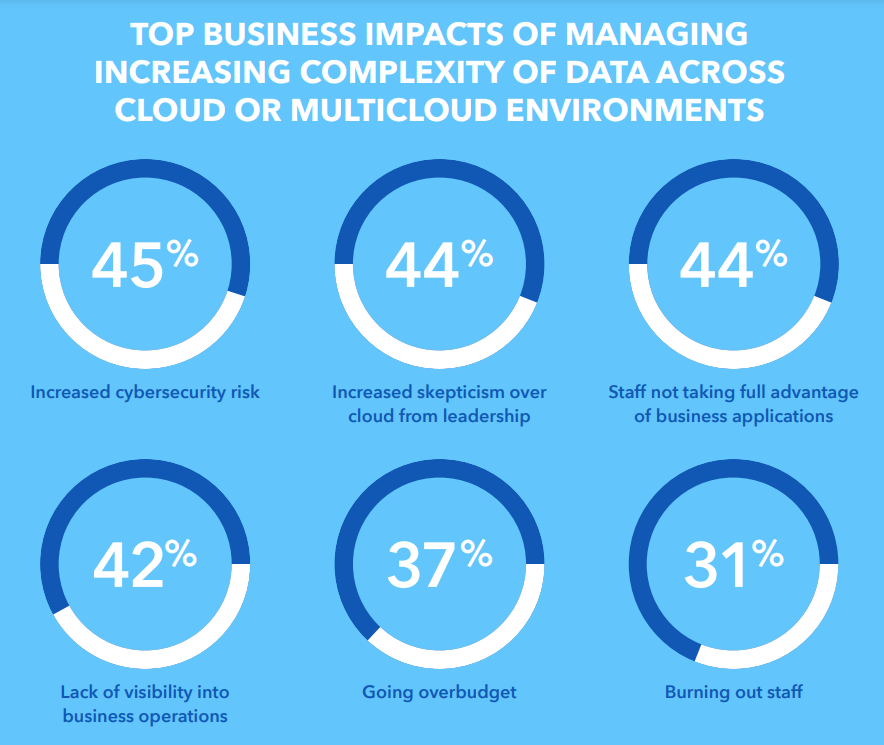
I consider the visibility and observability limitations cited by respondents as being closely related to their cybersecurity concerns; it’s challenging to manage systems, applications, and data when you lack clear visibility.
Ronen Schwartz, senior vice president and general manager of cloud storage at NetApp, shed additional light on observability and how it plays into cybersecurity.
The survey results indicate that customers are wondering, “Am I going to need to go to two or three or four places in order to understand what is going on in a hybrid multi-cloud environment? Or is there a single place for me to be able to observe processes and systems that are going across multiple clouds?” Schwartz says. “If I need to go to these four places…I need to assemble and understand the relationship between them.”
Schwartz noted the top-of-mind status of cybersecurity: customers need their data architecture to be governed by strong policies and strong security measures overall. “If the data fabric is going in a hybrid multi-cloud way, they really have to tackle things like data protection and cyber resilience in a single place,” he says, adding that there’s significant innovation taking place to gain greater visibility and observability into data estates while that innovation also enables taking proactive steps to protect data.
In NetApp’s case, the company’s Blue XP technology is helps customers view and manage their entire NetApp data estate, no matter where the data is stored, in a single place. Schwartz says Blue XP is being embraced by customers “because the pain is real, and the need is real.”
Budget Considerations
As noted above, 37% of survey respondents said going over budget is a concrete business impact of managing multi-cloud deployment. And 44% say the complexity also induces increased skepticism over cloud from their leadership. The survey goes into depth on cost factors, skepticism around cost savings, and ROI expectations. Of course, current macroeconomic conditions contribute to cost saving and related pressures surfaced in the data.
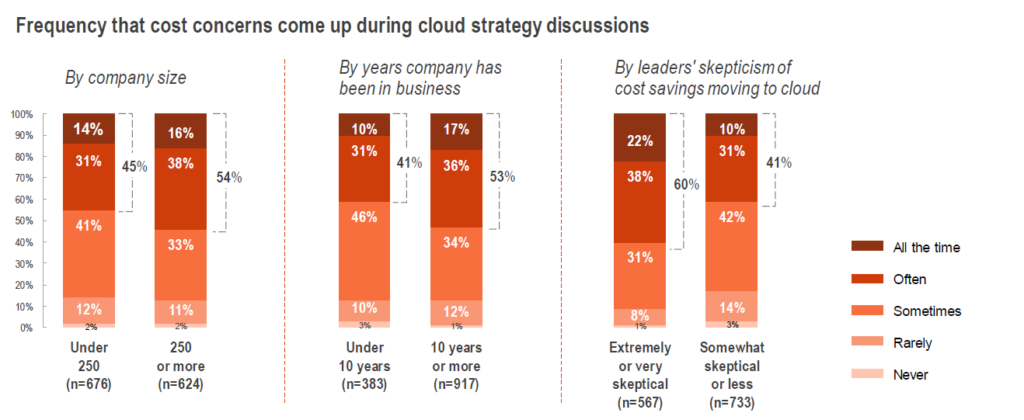
For instance, 76% of tech executives report that their CFO or other top business leaders are anywhere from somewhat skeptical to extremely skeptical about realizing savings with cloud investments. About half, 49%, of tech executives say that cost concerns come up “all the time” during cloud strategy discussions, and another 37% say they “sometimes” crop up.
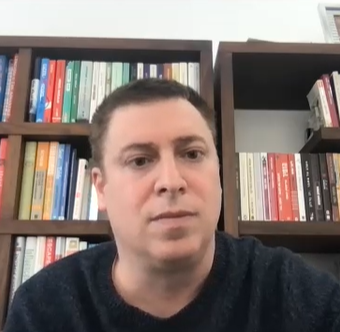
“I think the focus on ROI and on total cost of ownership has become key for every organization. We’re seeing companies take action in order to control their costs and this includes cloud costs.”
Ronen Schwartz, SVP and GM of cloud storage, NetApp
The intensity of the cost focus is high, but it’s highest among companies with over 250 employees. Among that subset, 54% of respondents say cost concerns come up at least “often” if not more frequently in cloud strategy discussions, vs. 45% for companies with fewer than 250 employees.
The cost focus, in turn, is translating into a big push to demonstrate ROI on cloud investment. That push is being felt at almost the same level in both smaller and larger companies, where both categories are expected to show ROI already, as well as long-term ROI. There’s also high similarity in the ROI expectations being applied to C-level and director-level leaders.

AI Tops Cloud Investment Priorities
Asked to identify the business needs most likely to drive cloud investment this year, the top response was “scaling AI and automation capabilities to offset workforce gaps,” cited by 39% of respondents on a global basis. In the United States, the AI priority was cited by 36% of respondents, one percentage point behind “meeting regulatory compliance” which was cited by 37% of US respondents. The second highest response globally, at 35%, was “driving business innovation and competitiveness.”
Schwartz noted that prioritizing AI can be an important step toward increasing manageability and observability while optimizing the utilization of infrastructure including cloud services. “The need to continuously optimize consumption is there and the best way to continuously optimize is by the infrastructure management environment becoming smarter and smarter,” he says. That’s a progression that AI can help to accelerate.
In addition, 40% of survey respondents (the highest percent) cited greater security and risk assessment as the top benefit of using AI in their organization. Number 2, at 38%, was improved customer experience.
Other Key Findings
NetApp’s research contains a fascinating set of findings spanning geographics, company sizes, job levels, and more. Here are four additional data points I’d like to share:
- Data mobility between clouds is the most often-cited technical challenge, identified by 33% of respondents
- Having a clear vision for the cloud strategy was the most-cited organizational challenge at 32% of respondents
- A majority of respondents globally report that staying compliant with local regulations drives their multi-cloud strategy most or some of the time. In the US, 30% said data sovereignty drives their multi-cloud strategy most of the time, and 48% said it does so some of the time
- 79% of respondents say cloud strategy is very or extremely important to sustainability or ESG outcomes
For more exclusive coverage of innovative cloud companies, check out Cloud Wars Horizon here:


